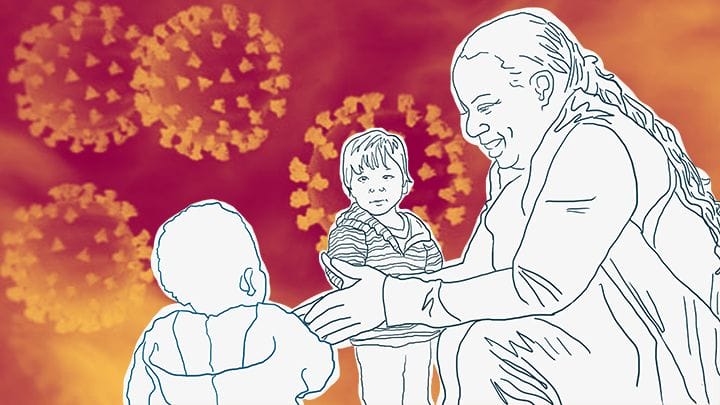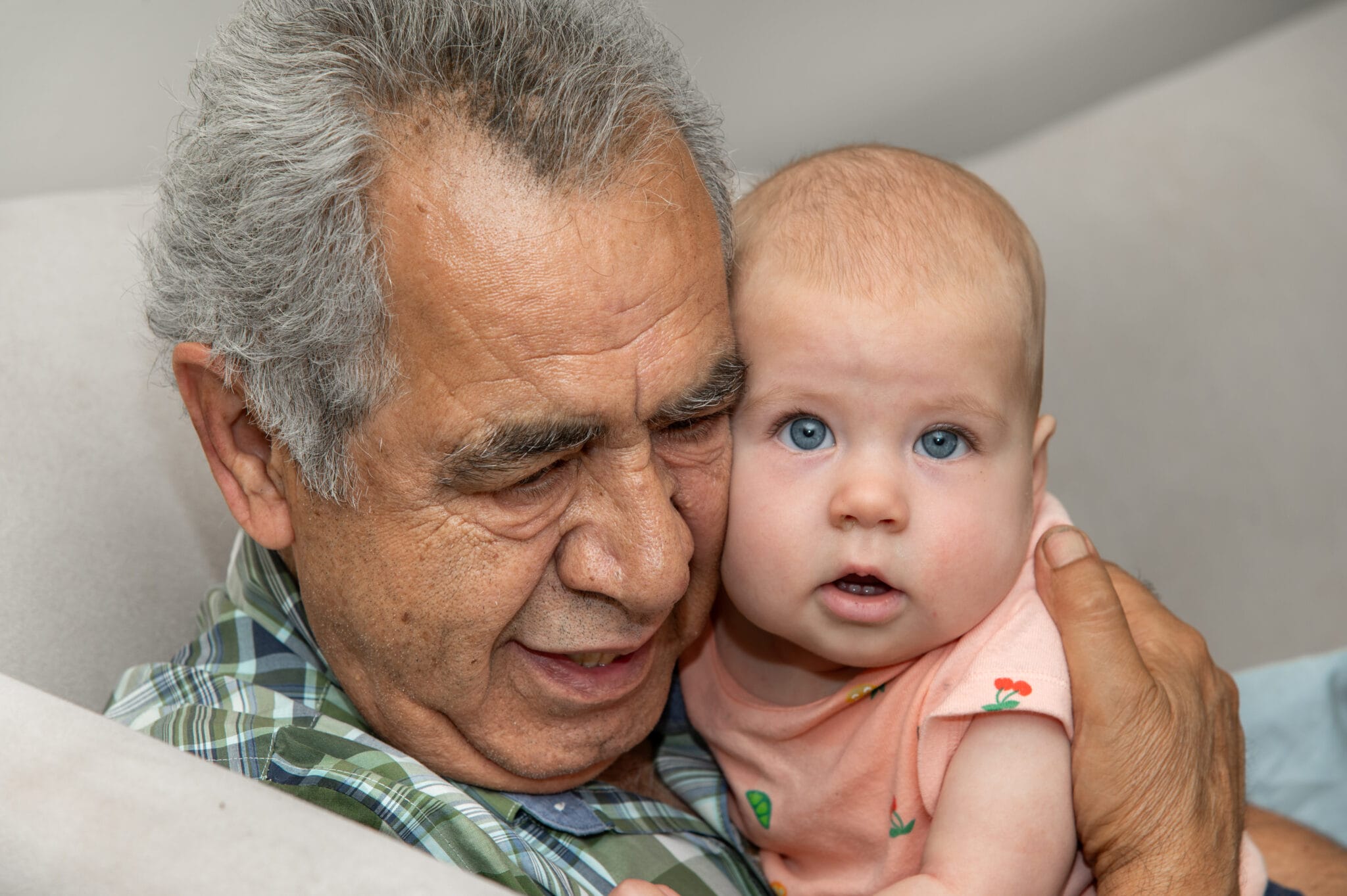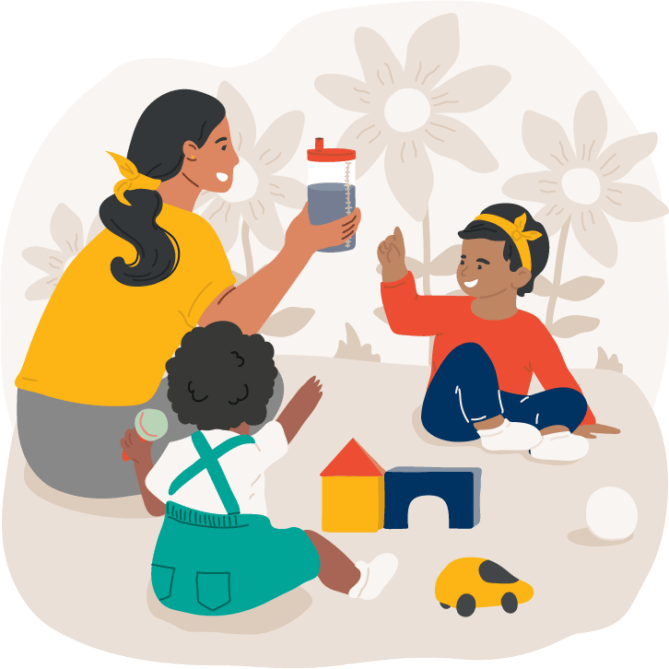In an effort to understand the effects of COVID-19 on child care programs and early educators throughout California, the Center for the Study of Child Care Employment (CSCCE) conducted a brief survey of licensed child care centers and licensed family child care programs in the state.
More than 2,000 programs responded to this survey from April 13-30, 2020: 34 percent of survey respondents are centers, and 66 percent are family child care programs. Many of these programs remain open: 34 percent of centers indicated that they are currently open, and 72 percent of family child care programs are open.
This data snapshot highlights the key findings from our survey results along with responses from providers in their own words, illustrating the devastating impact of COVID-19 on California child care programs.
Whether programs have closed or remained open, they face dire financial and safety challenges.
Survey results confirm the precarious nature of the child care industry, where programs operate on thin margins and staff earn poverty wages.
“We are stuck in a limbo between staying open for essential workers and risking our own health and safety because we are needed, and [we] can’t afford to close because we are independent contractors.”
“Those of us who closed did so in the best interests of the community and the families we work with. We want to reopen when it’s safe to do so, but… we need help from the city and state and should be able to get financial assistance.”
- 63% of open programs would not survive a closure of one month or longer.
- 23% of open programs would not survive a closure of any length of time.
- 14% of already-closed programs report that their program will not survive the closure past May 30.
What are programs saying about their finances?
“We feel very beat up. It has been shocking to see the low priority given to sustaining our programs. Schools and colleges have been closed and protected. Their staff paid. We are being thrown into the general pool of small businesses to scrap for loans – and we don’t have the reserves to survive the long wait for help. We also don’t bring in the income to ensure loan and rent repayments. We need help – and we need it fast.”
Most programs, whether they are open or closed, have laid off or furloughed staff.
- 78% of all programs have made staffing changes (e.g., laid off staff, cut benefits).
- 57% of all programs have either laid off or furloughed staff.
What are programs saying about staffing?
“We have applied [for stimulus funding] but have not heard from the bank, and we can not continue salaries as April tuition was not paid by parents.”
“My teachers have not been able to obtain any funds through unemployment insurance and are getting very worried. We need separate financial assistance that does not require accessing the overburden[ed] bureaucracy.”
Programs are having difficulty getting essential supplies.
- 62% of open programs are having difficulty obtaining either cleaning or sanitizing supplies or personal protective equipment (PPE) for staff.
- 69% of open programs indicate that they would like mini-grants for cleaning supplies and/or sanitizing services.
- 21% of open programs say they are having difficulty obtaining food for their program.
What are programs saying about essential supplies?
“Child care centers are much like hospitals and elderly care facilities, but child care centers are not being provided any priority in getting supplies or PPE.”
“Make us a priority to shop at the grocery stores. By the time the kids are gone and we get to go to the store, most of the basic foods are gone.”
Programs and educators have not received clear guidance on regulatory changes from the state.
- 37% of all programs would like clear guidance on regulatory changes (e.g., closures, social distancing, ratios).
- 28% of open programs are still serving children who are not from families of essential workers and not from an at-risk population.
- 6% of open programs are exclusively serving children who are neither from families of essential workers nor from an at-risk population.
What are programs saying about regulatory guidance?
“The social distancing guideline is difficult to understand in the child care setting. How are we expected to keep young children separated? I would like to reopen ASAP, but the new guidelines are difficult to uphold.”
“We have not been given clear direction on whether we should close [or] stay open [or about] benefits/assistance from the government during these times. Some parents need child care, others are uncertain about whether they should be coming or not.”
“[The guidance] set forth by CCL [Community Care Licensing] is impossible I believe, not realistic, to keep safe social distance and rigorous cleaning efforts. Toddlers and preschool children do not know how to do social distancing!”
Child Care Programs & Early Educators Are at Risk
- All child care programs and early educators need financial relief now.
- Open programs need better access to essential supplies.
- Programs need clear regulatory guidance that protects the safety of staff, children, and the community.
California child care programs are at risk of financial collapse.
This study confirms the precarious nature of the child care industry. Our survey results show that California child care programs and early educators need financial relief now – otherwise, many programs will not survive this crisis, and we will see mass permanent closures across the state.
- “Child care providers are faced with daily struggles between closing their small businesses in order to keep their own families healthy and safe or remaining open for essential workers… If we close, we run the risk of losing our small business.”
- Programs are suffering, whether they remain open or have already closed; in both cases, they have had to lay off or furlough staff and are in need of financial support.
- Essential services, including child care, should not be forced to fend for themselves to access small business loans or the Paycheck Protection Program. Child care needs its own dedicated financial stimulus, and it cannot come soon enough.
Child care providers are facing serious health risks.
The answer to this financial devastation is not rushing to reopen child care, but providing the financial and health resources that enable programs to be closed and reopen when it is safe to do so.
- Child care programs have been encouraged to stay open or to reopen, first to serve essential workers and then to support all other workers as the state reopens, placing early educators at risk: “While I would like to support working families, it is a risk to my own health.”
- This approach fails to recognize that early educators are themselves essential workers who need appropriate resources. As California pushes to reopen child care programs, these resources must include support for temporary closures, clear regulatory guidance, and safety protections grounded in the realities of social distancing in child care settings.
- “Working with young children is a huge health risk for any child care teachers who are going to work in family child care or in centers. Programs serving 12 kids means there are multiple times the exposure risk every day. It’s really scary for my teachers to contemplate the idea of coming back to work.”




